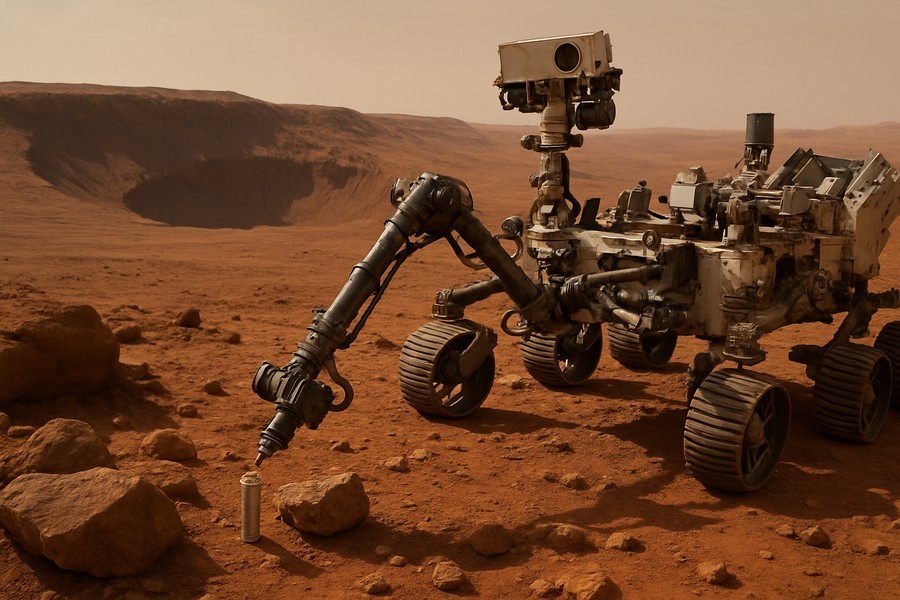
Will China be the First to Analyze Potential Signs of Life from Mars?
While there's a chance that signs of life have been detected on Mars, the question remains: will China be the first to analyze these crucial samples on Earth? The team behind the exploration of Mars announced they have uncovered potential signs of life in parts of a Martian rock, located in a crater on the Red Planet. However, this finding is not definitive. To confirm whether these fascinating minerals are a result of microbial life or a non-living process, the samples gathered need to be examined on Earth, as stressed by the team.
The sample, referred to as "Sapphire Canyon," was collected as a rock core in a tube the size of a cigar. The original plan was for these tubes to be brought back to Earth as part of a mission to return samples from Mars. However, this mission has faced substantial delays and budget issues, and its future is uncertain due to a proposed federal budget that would significantly reduce funding. With this mission on hold, China may be the first to embark on a historic journey to bring back the first samples from Mars.
China's Ambitious Plan
China's upcoming mission, set to launch towards the end of this decade, aims to return Martian materials to Earth in the early 2030s. The exact landing location is still being decided upon, but could it target the same crater where the potential signs of life were found and collect similar samples?
The mission plans to collect samples from Mars using a drill, a scoop, and a small drone, aiming to collect approximately 1.1 pounds (500 grams) of material. The landing spot selection, however, is subject to various engineering limitations.
Selecting the Landing Site
The landing site for this mission will be chosen between 17 and 30 degrees North latitude. The crater where potential signs of life were found is located at 18 degrees North, making it a plausible choice. However, the altitude of the crater might rule it out.
The floor of the crater is around 8,350 feet (2,600 meters) below Martian "sea level." However, the mission requires a landing area that's even lower, at least 9,840 feet (3,000 m) below the assumed sea level. This is because the mission needs more atmosphere to slow down its descent for a safe landing on Mars.
Scientists have been refining Mars landing technologies for years, allowing them to target higher-altitude and riskier areas that are more scientifically valuable.
Landing Precision: A Key Factor
The accuracy of landing, often described as a landing ellipse, or the elliptical area on a planetary surface that outlines the range of possible landing spots for a spacecraft, is another critical factor.
The landing ellipsis for previous Mars exploration missions was approximately 4.3 by 3.7 miles (7 by 6 kilometers). China has successfully landed on Mars once, during its first attempt in 2021, as part of a previous mission. This same technology will be used for the upcoming mission, with an ellipse of 31 by 12.4 miles (50 by 20 km), indicating a greater difficulty in targeting smaller, crucial areas — such as the spot in the crater where the "Sapphire Canyon" was collected.
